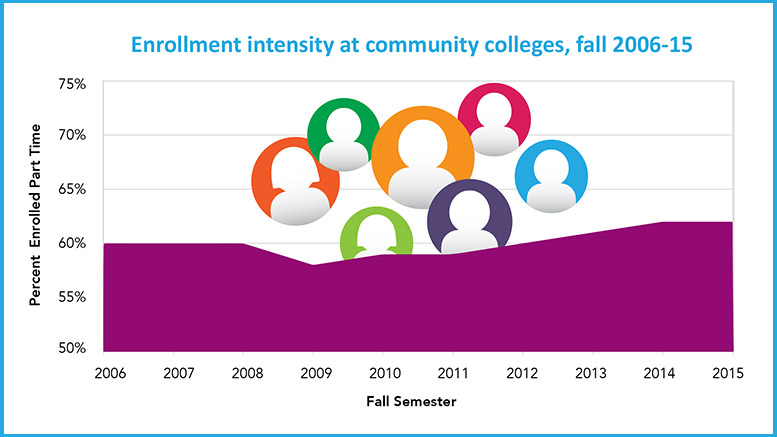“What’s your enrollment?”
That’s consistently one of the top questions that colleges are asked at the beginning of an academic year. Enrollment figures — and, in particular, “full-time equivalent” (FTE) — are closely watched by college advocates, primarily because those numbers can affect their public funding.
But, as a new brief from the American Association of Community Colleges (AACC) notes, FTEs don’t project an accurate picture of community colleges and their students. In fact, for institutions that are open-access and serve a large portion of students who attend part-time, relaying on FTE can “contribute to underfunding issues.”
The brief — written by Christopher Mullin, a former AACC policy analysis director who now serves as an executive vice chancellor in the Florida Colleges System — observes that public two-year college enrollments are particularly sensitive to “outside influence,” such as population and unemployment shifts.
“When an institution abruptly closes its doors, community colleges respond to serve the displaced student,” the brief says. “Or when large employers in a college’s service area close, when new economic development projects suddenly materialize, or the decision to allow high school students to maximize their inherent potential through dual enrollment occurs, community colleges respond with open doors.”
In these examples, it adds, the students typically are not enrolled full-time, which is not reflected in FTE.
The brief makes a case for developing other approaches to help determine funding levels and other decisions. Most colleges use the “base-plus” approach, which starts with a set funding amount and then considers factors such as program enrollments with associated costs, multi-institutional supplements, inflation and equity components.
“These factors, built in part upon decades of research into unit cost studies to identify cost centers within colleges, are largely overlooked,” it added.
Swaying policymakers and others away from relying so much on FTE is a challenge. Many federal, state, academic and policy research publications continue to emphasize FTE.
“It is no surprise, then, that national, state and institutional policy conversations are largely informed by FTE student enrollment and their derivations,” the brief says. “In reality, FTE students are mythical beings; they are not human.”

